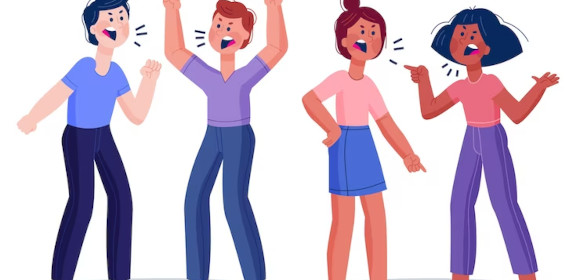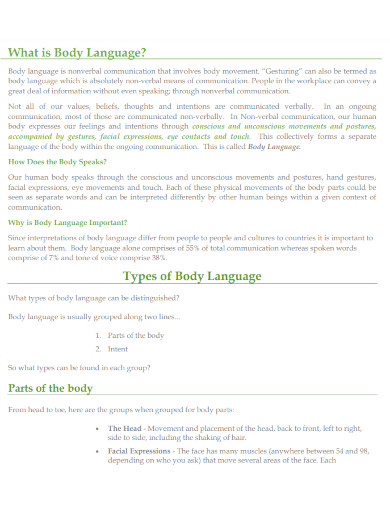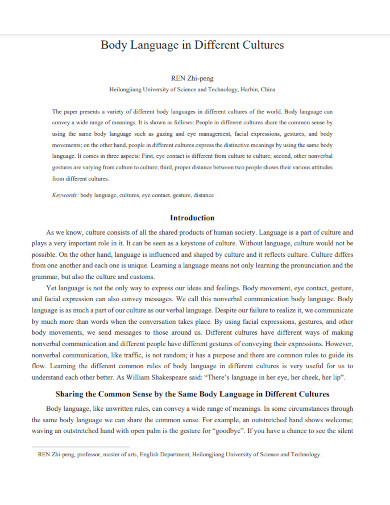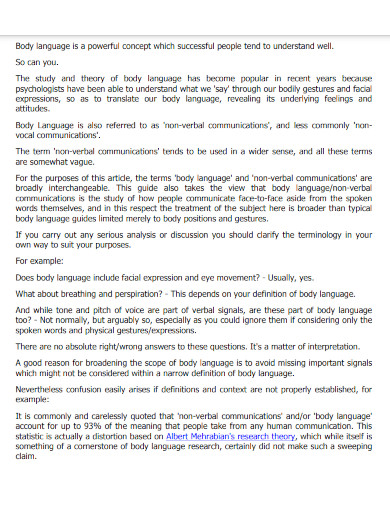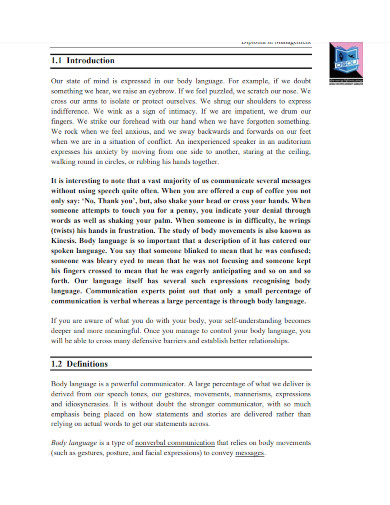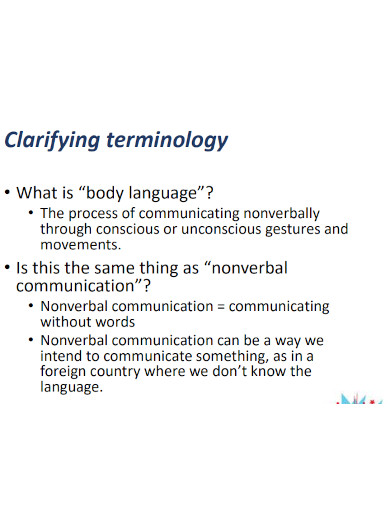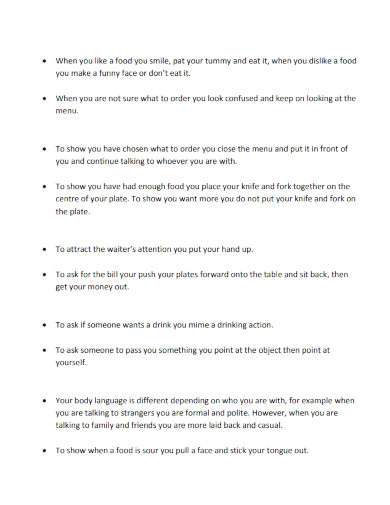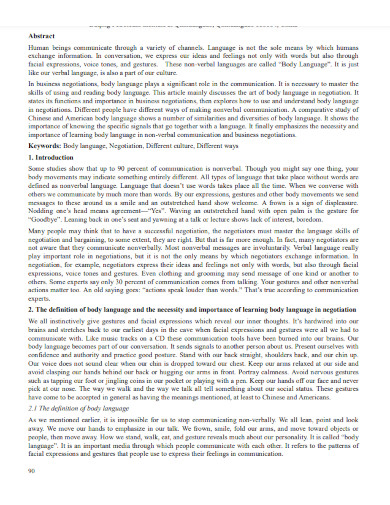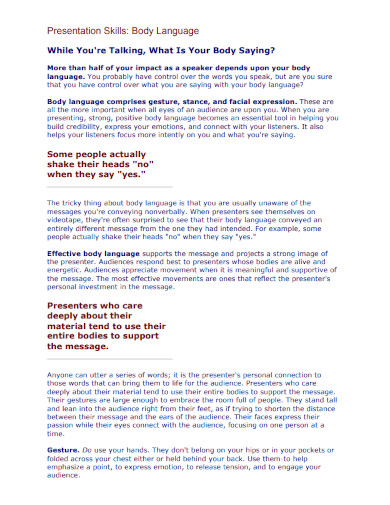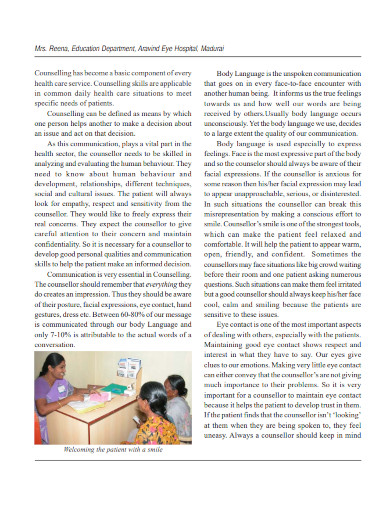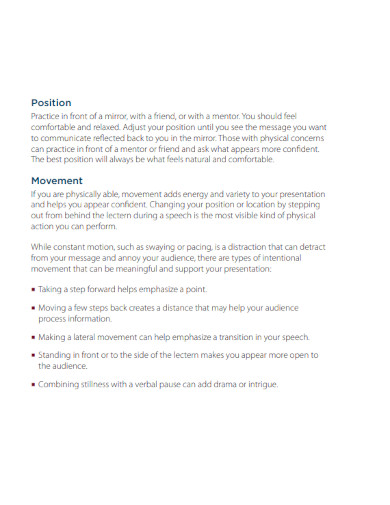10+ Body Language Examples to Download
A lot of people denote nervous movements, unsteady eye contact, stutters, and sweat to a person who is nervous or is lying. These are common elements one can observe in the body language and theme of a liar.
1. Body Language Example
2. Body Language in Different Cultures
3. Positive Body Language
4. Body Language Basics and Introduction
5. Body Language and Etiquettes
6. Importance of Body Language in Communication
7. Body Language and Gestures Glossary
8. Body Language in Business Negotiation
9. Presentation Skills Body Language
10. Body Language in Patient Counselling
11. Effective Body Language
What Is a Body Language?
Body language is a specific set of non-verbal and physical actions, expressions, and mannerisms that are primarily rooted in one’s unconscious. These signals will non-verbally communicate one’s feelings, comfort, and stance during a conversation.
How to Improve Your Body Langauge
A person’s body language will outline the said person’s behavior, current feelings about the situation, attitude, and comfort in direct conversation or communication. Therefore it is important how to project oneself in conversations as this will affect the quality of your communication.
Step 1: Practice One’s Posture
Posture is an element of body language that deals with how one holds themselves during the conversation. Begin by practicing and adopting a more open and confident posture that will allow other people to trust you more easily. Examples of open posture include uncrossing one’s arms and having a generally loose body posture.
Step 2: Improve One’s Ability to Maintain Eye Contact
Eye contact is an important factor in a successful conversation or dialogue as it has various benefits attached to this action. Improve and practice one’s ability to maintain an appropriate amount of eye contact in a conversation without feeling uncomfortable.
Step 3: Try Mirroring the Other Person’s Body Language
One of the best ways to engage a person through body language is by slightly and subtly mirroring their mannerisms and gestures, as people tend to easily converse and trust people who have similar mannerisms and gestures. Be sure to not overtly mimic the person’s action as it can have an unintended effect or consequence in the conversation.
Step 4: Practice and Integrate a Confident Body Language or a Positive Body Language
One’s communication skills are also affected by the person’s body language and non-verbal communication. One of the most effective communication skills or soft skills is called assertive communication, which incorporates confident and positive body language to respectfully assure one’s position without offending the other party.
Step 5: Learn the Local’s Preference for Body Language
Every ethnic group or culture has a bias for specific types of body language and may even find other types of non-verbal communication offensive. Therefore it is important to know and understand the body language of different cultures around the world. You may start by getting to know the local’s preferences in body language and tone of voice.
FAQs
What are the common elements of a person’s body language when they like you?
Everyone adopts a style or body language that caters to their social needs and affinity. This means that one’s body language or non-verbal communication is wholly centered on one’s perspective, context, and environment. If a person likes you the people will tend to be more engaged, which means the person will tilt their head towards you when they listen and have more positive facial expressions, will mirror your movements and mannerisms, and will generally keep constant eye contact with you. These are a couple of the more common elements of the person’s body language that will exhibit when the said person likes you.
What are the elements of body language?
There are many elements that people incorporate into their body language, all of which will contribute to the person’s non-verbal communication. A person’s facial expression is an element of body language that will utilize the ability of the human face to communicate or convey a specific emotion without needing to verbalize the feeling. Another element of body language is composed of one’s movement, pose, and gestures; the way the person carries gives the receiver a specific perception of the person, while their gestures can send a message or sentiment without needing to say it out loud. Eye contact and space are one of the most important elements of body language and nonverbal communication. One’s method of touching or holding is also another element of body language, which can communicate a specific intention based on the manner of touch. The final element of body language is one’s voice and tone, which can convey one’s interest and feelings during a dialogue or conversation.
Why is eye contact important in communication?
Humans are primarily visual creatures that use a lot of visual clues and the context in their communication. One of the primary ways we engage in non-verbal communication with another person is through eye contact. If one tries to evade or minimize eye contact, then the conversation will be negatively impacted, which creates a large room for misunderstanding and misinterpretation. Not only that, but eye contact is so heavily ingrained in our daily lives that it highly contributes to inherent trust and one’s focus in the conversation. In conclusion, eye contact is very important in communication as it will sustain the focus and improve the quality of the conversation or dialogue.
Body Language is a concept that involves the incorporation of various elements of the person’s body to relay a specific message without the need for verbal communication. It is very important to know how to properly convey one’s body language as it prevents and minimizes the chances of misinterpretation and miscommunication. Therefore one should make an effort to improve one’s body language.


